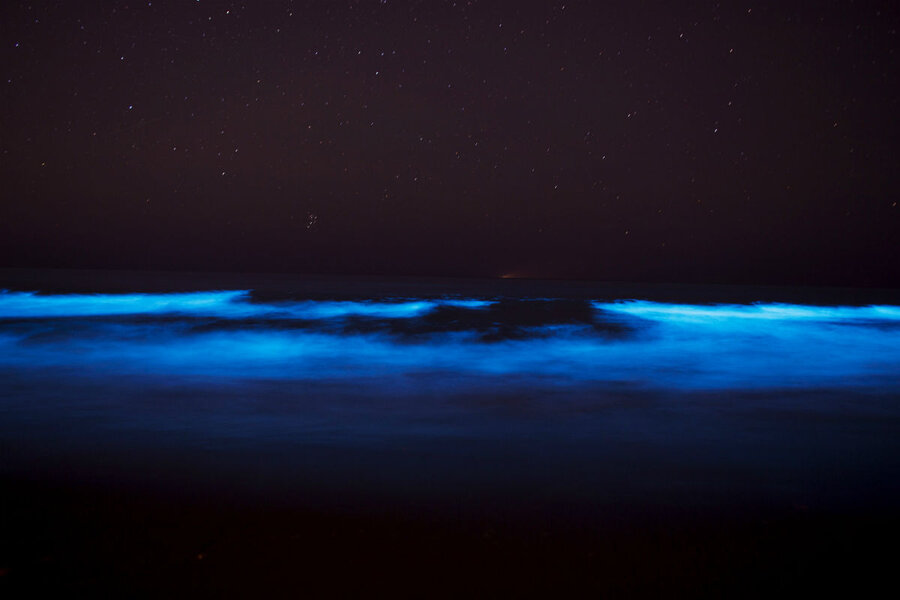Tasmanian blue glow may hide a deadly secret
An unearthly blue glow off the northwestern coast of Tasmania is enchanting locals and photographers, but may signal hungry days ahead for fish.
Hordes of tiny algae are lighting up the Tasmanian coast with a phenomenon commonly known as “sea sparkle.” Long observed in the waters around Sydney, the bioluminescent critters are creeping south thanks to warmer oceans and shifting food patterns, worrying local fish farmers and ecologists who suspect the invaders might disrupt the food chain.
The responsibility lies with Noctiluca scintillans, small dinoflagellates taking their name from the Latin words for night and light. Normally sitting right on the cusp of naked eye visibility, when the sun goes down the creatures put on a dramatic show.
Noctiluca respond to any motion with a bright blue flash, which scientists suspect is useful for confusing predators and attracting mates.
"It acts a bit like a burglar alarm," aquatic botanist Prof. Gustaaf Hallegraeff told the BBC. “Something wants to eat you, you flash at it and then you scare it away."
And that visual warning is proving quite attractive to humans, such as local Brett Chatwin who was just settling down to bed when he saw pictures revealing a local bay turned blue on social media.
“I said to my wife, ‘I’m going out to chase this’ and what you see in the photos is what I saw with my eyes,” Mr. Chatwin told The Australian. “It was quite a sight to behold.”
Other Tasmanians reported waiting as long as six hours to witness the sight.
But while the otherworldly images delight on social media, others see the rippling gleams as harbingers of troubles to come.
The historical record reports algae flickering in the waters near Sydney for well over a century, but they’re newcomers to the Southern Ocean around Tasmania, which sits more than a hundred miles to the south. Sightings began in 1994, but didn’t become routine until 2000, The Australian reports.
As an invasive species, ecologists worry what impact they might have on native life. When a swarm of Noctiluca rolls into town, they devour all the plankton, leaving little left over for other marine creatures.
“This is a plankton that needs to feed on other organisms and it is a voracious feeder; it really can behave like a vacuum cleaner,” Professor Hallegraeff of the University of Tasmania told The Australian.
And the problem extends beyond wild fish. The area is famous for its oyster and mussel production, and local shellfishermen wonder if there’ll be anything left for their shellfish to eat.
A 2014 study found that Noctiluca tend to replace another variety of algae called diatoms that usually serve as the foundational link in the local food chain.
“We contend that N. scintillans blooms could disrupt the traditional diatom-sustained food chain to the detriment of regional fisheries and long-term health of an ecosystem supporting a coastal population of nearly 120 million people,” the researchers wrote in their abstract.
Dr. Hallegraeff blamed the shift on warming waters, among other factors.
It’s just one more piece of uncertain climate news for Australia, following on the heels of reports that the Great Barrier Reef suffered large areas of bleaching in 2016.






